Eyebrows Microblading Richmond Hill
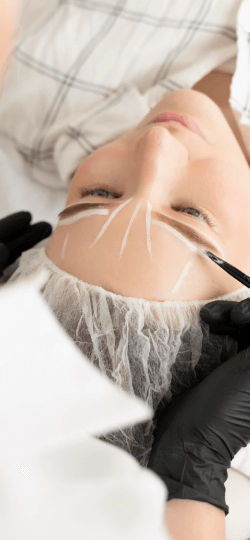
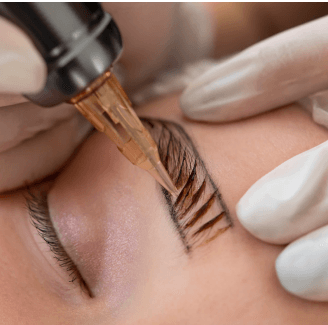
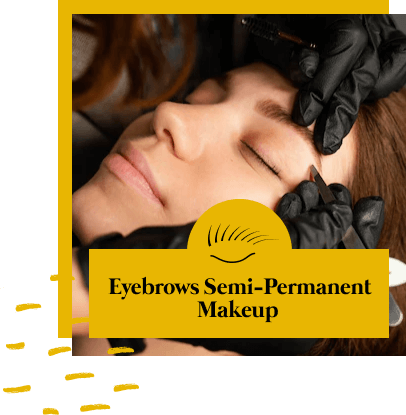
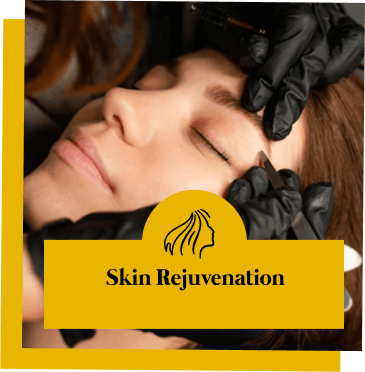
What Is Brow Microblading
Eyebrows are human’s main noticeable facial features.
One of the most recent and natural-looking methods of making perfectly shaped eyebrows is Microblading. It is a semi-permanent makeup technique (Tattoo) that creates hair-like strokes with various lengths and densities to fill the gaps and reshape eyebrows. With this artistic job, the imperfections are corrected and the natural look of eyebrows is achieved.
Complementary Consultation
Session
Contact us to book a consultation
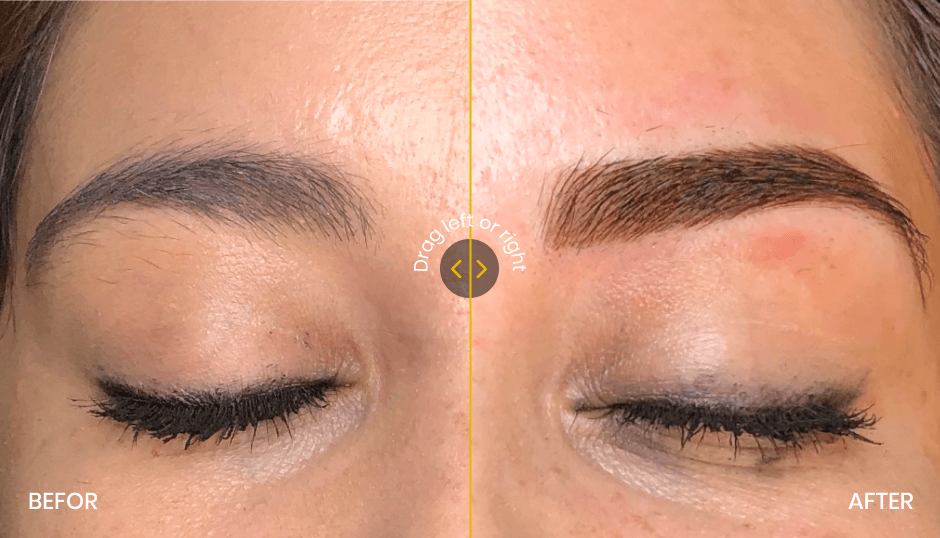

Natural Microblading Eyebrows
Eyebrow Microblading is a form of semi-permanent makeup. It uses fine blades to create hair strokes that mimic the look of real hair. This technique helps to fill in sparse eyebrows or reshape them completely for a more symmetrical and fuller look.
PhiBrows is a manual, semi-permanent technique of hyper-realistic eyebrow drawing in which the shape of eyebrows is calculated according to facial morphology and golden proportion (phi 1,618). The technique is intended for anyone over the age of 18 (persons under 18 must be accompanied by their parents) who want to correct the aesthetic problems of their eyebrows.
Symmetry is calculated using the PhiBrows application. It is calculated while the client’s eyes are closed because in that way mimetic muscles that can affect eyebrows’ symmetry are relaxed. At the Golden Pulse in Richmond Hill, pictures of prepared shapes, as well as all other important information, are stored in the application, under the Treatment History section. Strokes are always drawn in the direction of natural hair growth in order to achieve a hyper-realistic eyebrow look. We provide the best quality Microblading Eyebrows services in Richmond Hill and Newmarket.
Fast And Amazing Result
Safe For All Skin Types
Long-Lasting Result
Low Maintenance
No Downtime

Pre-Treatment Care
Contact us before any treatment to consult with the clinic medical doctor or expert laser technicians in Our laser hair removal Richmond hill if you have any special health or skin condition.
- In order to successfully perform the treatment, the skin must not be in the regeneration process, i.e. it must not be damaged.
- If there is eczema, seborrheic dermatitis, acne, pimples, or any damage in the eyebrows area, seven days before treatment the client can use PhiTopic cream that will eliminate the problems (instructions for use can be found on the package). PhiTopic is available or can be ordered at the Golden Pulse clinic.
- Abrasive treatments such as peelings, fruit acids, chemical peels, laser treatments, and similar should be avoided a month before the treatment.
- One month before the treatment, Botox or fillers should not be used.
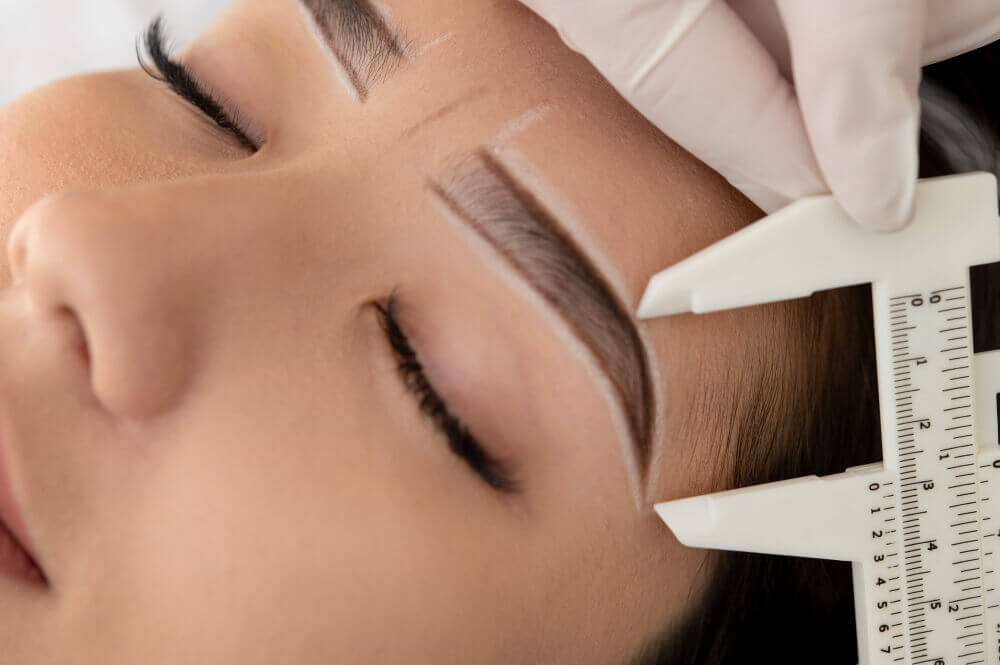
Post-Treatment Care
If you have any unexpected problems with the healing of the treatment area, please contact us at Golden pulse immediately, to discuss further instructions.
- Increased sweating during 2 weeks after the treatment session.
- Hot bath, tanning, swimming, sauna, or Jacuzzi to be avoided for 10 days after the treatment.
- Apply chemicals and some creams may cause a shift in color and premature fading
- During 2 weeks after the treatment session, it is not recommended to do any laser or peelings on the treatment area.
- Do not apply any creams containing Retin-A or Glycolic acid to the treatment area
- Avoid picking, peeling, or scratching the micro-pigmented area
- Drinking alcohol may lead to slow healing of wounds
- Do not touch of the eyebrow area except when rinsing and applying the post-care cream with a cotton swab
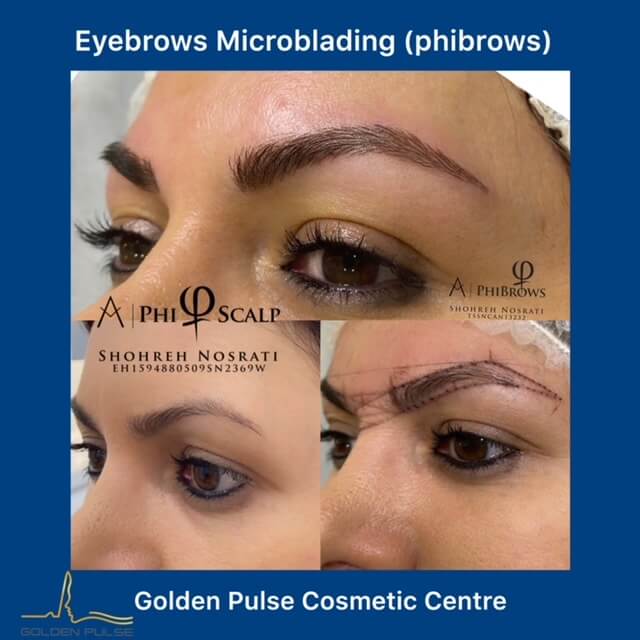
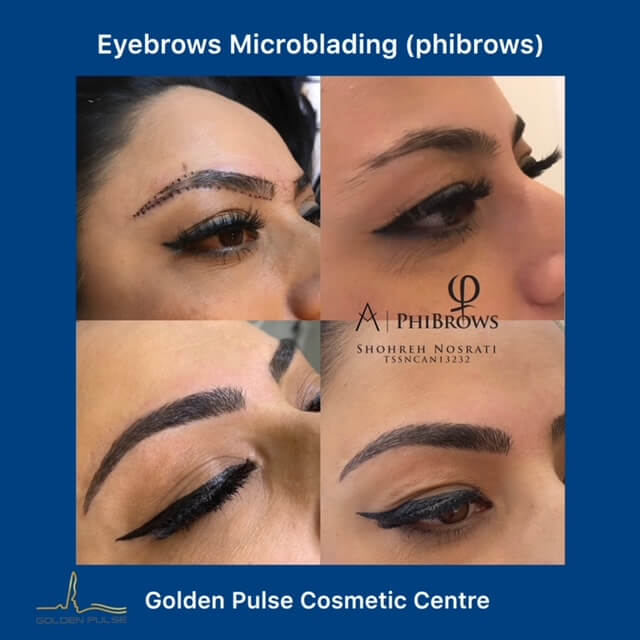
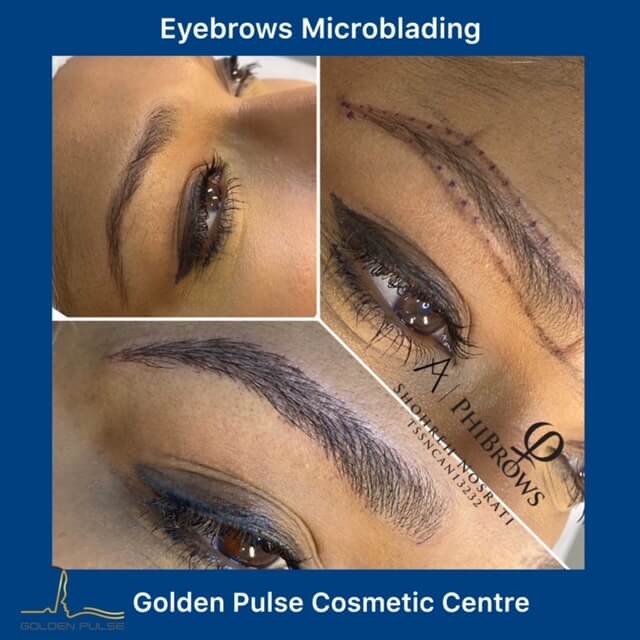
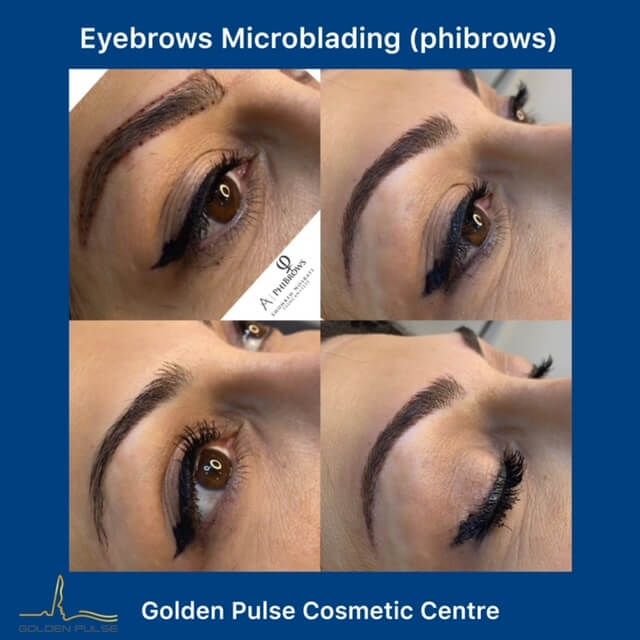
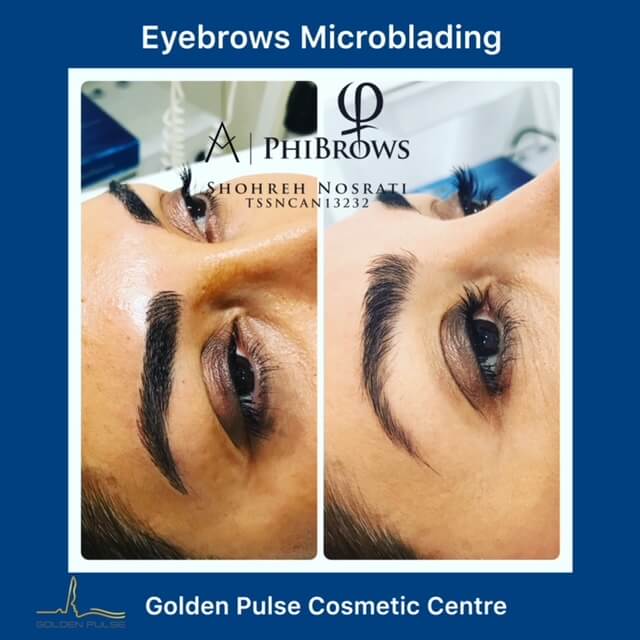
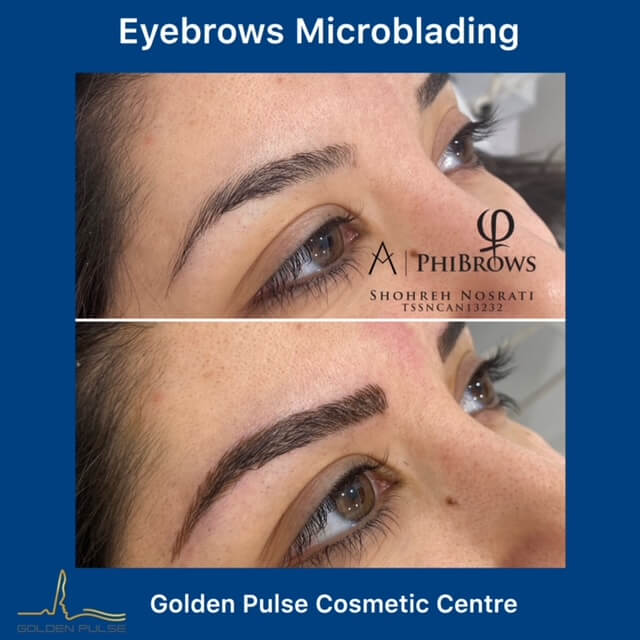
does Microblading last forever?
Treatment is done by using sterile and disposable tools, while pigments are of the highest standard (PhiBrows Microblading pigments). Correction is done a month after the treatment as 10-15% of strokes are lost after the first treatment. The inserted pigment is very dark during the first 5 to 7 days. 7 days later, it loses up to 40% of its intensity. If you think that pigment is too dark, do not try to fade it by yourself. Be patient, the first wait for 7 days until it fades away naturally. How long the pigment will be retained mostly depends on the skin’s oiliness. The oilier the skin is the shorter pigment retention is. Sweating and sun exposure also affect pigment retention. On average, the expected time until the new refreshment of pigment is 10 to 12 months. If the skin is oily, it takes up to 6 months. Healing is completely done 28 days later and then it is necessary to add the pigment that was lost in the meanwhile. If the skin is problematic and oily, several such corrections can be made.
Post-treatment care makes up 70% of total treatment success. Conscientiously stick and adhere to the given advice, because if you do not do that, you can lose up to 80% of drawn strokes. Rinsing and applying the cream is of great significance.
Have You Any Question?
PhiBrows Microblading is a special technique of drawing hyper-realistic eyebrows manually. This technique is also known as Microblading.
.
Week one- Immediate after the treatment, the brows may appear up to 40% darker
Week two – the color may now appear lighter than you want it to, as the color density reduced by up to 40% – -80%.
Week three – the color of the treated area start returning darker and more permanent.
Week six –It is the last stage of the healing and the final color will be evident.
It is a safe treatment when an expert and trained artist follows all strict guidelines of the Phi Academy.
Yes, please bring your glasses on the day of your treatment.
.
No. Microblading will not cause any brow hair loss. It is very normal for brow hairs to fall out once in awhile due to its growth cycle.
Microblading is a semi-permanent makeup where we consider tattoo a permanent treatment. Tattooing is a traditional technique to deposit ink into the second layer of skin (known as the dermis) by the needle. The Microblading technique is a rather new technique to create the illusion of fuller brows. The tattooing technique and Microblading are different procedures in many areas.
.
It usually costs about least $450.
.
Depending on your skin type (Normal, dry, or oily skin), it lasts between one to two years.
